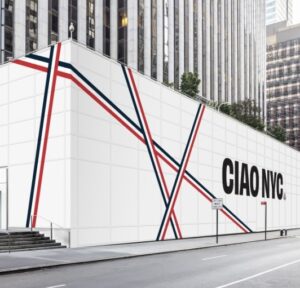The X Games have long been synonymous with pushing the boundaries of extreme sports. From vert ramp skateboarding to BMX freestyle and motocross, the X Games have celebrated athleticism, creativity, and daring feats. While skateboarding and BMX continue to be highlights, the history of inline skating at the X Games offers an intriguing chapter that reflects the rise and fall of a sport once on the cutting edge of mainstream popularity. On the other hand, the Ford Mustang, an icon of speed and American muscle, represents a parallel narrative of timeless design and performance. Though the two worlds may seem distinct, their shared emphasis on speed, style, and innovation offers fascinating connections.
The Rise and Fall of Inline Skating in the X Games
In the 1990s and early 2000s, inline skating, often referred to as aggressive rollerblading, was one of the most exciting spectacles at the X Games. Athletes like Chris Edwards, Arlo Eisenberg, and the Yasutoko Brothers thrilled audiences with high-flying tricks, grinds, and spins. Inline skating’s popularity surged during this period, with dedicated events in vert and street skating, showcasing the sport’s dynamic energy and technical skill.
The Golden Era
Inline skating’s inclusion in the X Games elevated the sport to new heights. Events like vert skating highlighted athletes defying gravity with jaw-dropping aerial tricks, while street skating celebrated creativity and technical prowess on urban-inspired obstacles. Brands like Rollerblade and Roces capitalized on the sport’s growing popularity, introducing cutting-edge skates designed for aggressive use.
The Yasutoko Brothers, for example, became synonymous with vert skating excellence, consistently pushing the limits of what was possible on a half-pipe. Inline skating competitions were often among the most-watched events during the X Games’ early years, cementing its place in extreme sports culture.
Decline and Removal
However, by the mid-2000s, inline skating began to wane in popularity. Skateboarding and BMX gained a stronger cultural foothold, driven by iconic figures like Tony Hawk and Dave Mirra. Inline skating, meanwhile, struggled to maintain its relevance in mainstream media.
In 2005, the X Games officially discontinued inline skating events. The decision marked the end of an era and left the sport to navigate a quieter path, sustained by a passionate but smaller community of enthusiasts and athletes.
The Ford Mustang: A Symbol of Speed and Power
While the X Games have primarily focused on human-powered sports, the Ford Mustang occupies a similar cultural space as a symbol of speed, style, and adrenaline. Since its debut in 1964, the Mustang has captured the imagination of car enthusiasts worldwide. With its sleek design, powerful engines, and status as an American icon, the Mustang represents the same spirit of innovation and daring that defines the X Games.
The Evolution of an Icon
The Mustang’s evolution mirrors the progression of extreme sports. From the original first-generation models to the high-performance Shelby GT500 and modern innovations like the all-electric Mustang Mach-E, the Mustang has continually adapted to meet the demands of changing times. Each iteration of the Mustang has brought new features, from enhanced aerodynamics to cutting-edge technology, ensuring its place at the forefront of automotive design.
Mustang and Motorsports
Though not a direct participant in the X Games, the Mustang has a rich history in motorsports, including drag racing, road racing, and even drifting. Events like Formula Drift, which feature modified Mustangs performing high-speed slides, evoke the same energy and skill seen in skateboarding or BMX competitions. The Mustang’s versatility and raw power make it a fitting counterpart to the athletic feats performed at the X Games.
Speed and Style: Connecting Inline Skating and the Mustang
Despite their differences, inline skating and the Ford Mustang share common themes of speed, style, and cultural impact. Both represent communities of enthusiasts who value precision, innovation, and the thrill of pushing boundaries.
Personal Expression
Inline skating, particularly in its street skating form, emphasizes creativity and individuality. Skaters develop unique styles, combining tricks and lines to express themselves on urban landscapes. Similarly, the Mustang’s customization culture allows owners to personalize their vehicles with custom wheels, paint jobs, and performance upgrades, turning their cars into extensions of their personalities.
Adrenaline and Risk
The adrenaline rush of executing a flawless trick on a vert ramp parallels the exhilaration of accelerating a Mustang GT down an open road. Both activities require skill, focus, and a willingness to embrace calculated risks, creating an undeniable connection between the two.
Cultural Significance
Inline skating’s golden era in the X Games and the Mustang’s enduring legacy both highlight their cultural significance. Inline skating inspired a generation of athletes and fans, while the Mustang continues to symbolize freedom and adventure.
Revisiting the Legacy of Inline Skating
Though no longer featured in the X Games, inline skating has experienced a quiet resurgence in recent years. Social media platforms like Instagram and TikTok have introduced a new generation to the sport, showcasing creative street skating and innovative tricks. Events like the World Roller Games have also provided a platform for competitive inline skating, keeping the spirit of the X Games alive in new ways.
A Passionate Community
Inline skating remains alive through its dedicated community, which continues to innovate and expand the sport. From urban skaters perfecting grinds and slides on handrails to marathon skaters covering miles of open road, the diversity of inline skating highlights its enduring appeal.
The Role of Nostalgia
As extreme sports evolve, nostalgia for inline skating’s heyday in the X Games has fueled renewed interest. Classic skates like the Roces M12 and new technologies like carbon fiber frames have brought modern performance to a sport steeped in tradition.
Mustang’s Future in Speed and Innovation
The Mustang, too, looks to the future while honoring its past. The introduction of the Mustang Mach-E, an all-electric SUV, demonstrates Ford’s commitment to sustainability and innovation. While it departs from the classic Mustang formula, the Mach-E reflects the same daring spirit that has defined the brand for decades.
Mustang in Popular Culture
The Mustang remains a staple of popular culture, appearing in films, music, and video games. From Steve McQueen’s iconic chase scene in Bullitt to its presence in the Need for Speed franchise, the Mustang continues to inspire generations of enthusiasts.
New Era of Performance
With models like the Mustang GTD, a street-legal performance car designed alongside its GT3 race car counterpart, Ford is pushing the boundaries of what the Mustang can achieve. These innovations ensure that the Mustang remains a leader in the automotive world.
Impression
Inline skating and the Ford Mustang may occupy different spaces in the world of sports and culture, but their shared emphasis on speed, innovation, and personal expression unites them. Both have inspired passionate communities, pushing boundaries and redefining what’s possible in their respective realms.
As inline skating continues to find its footing in a new era and the Mustang evolves to meet the demands of modern performance, both serve as reminders of the enduring appeal of adrenaline, style, and the human desire to push limits. Whether on wheels or skates, the spirit of speed and innovation remains timeless.
No comments yet.








